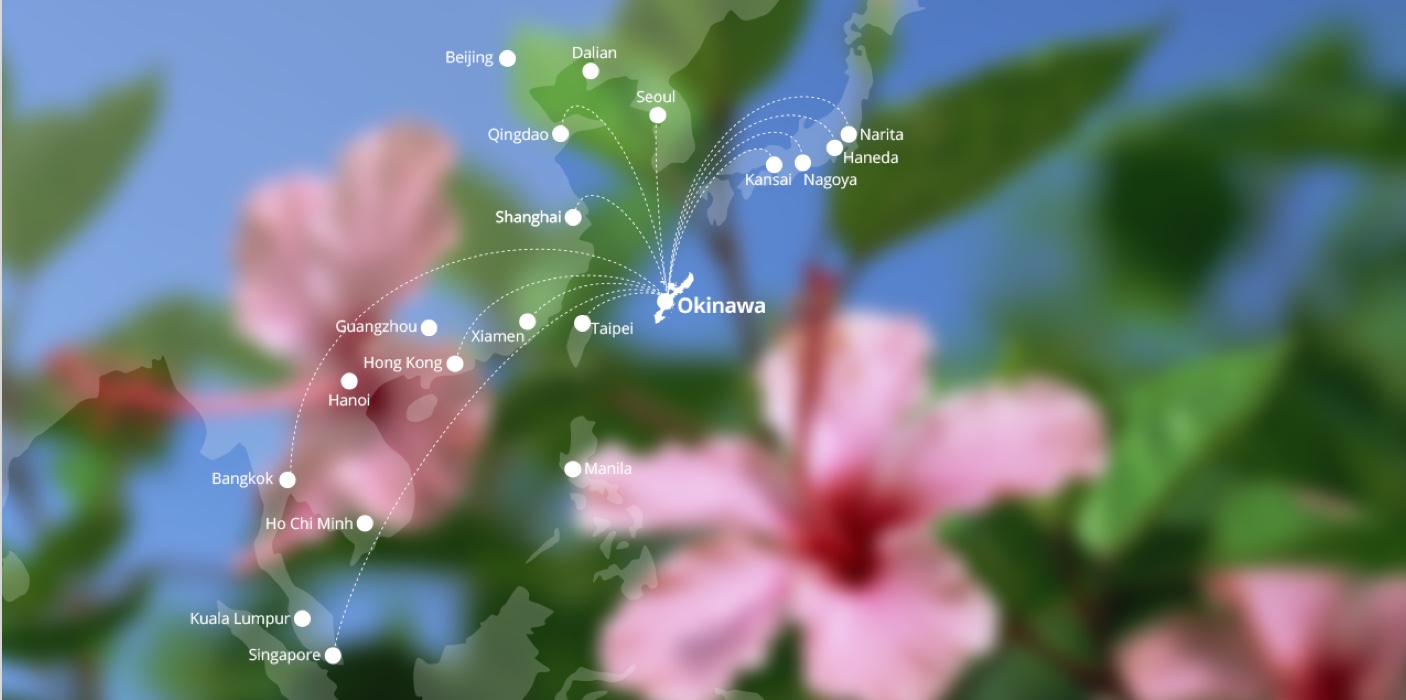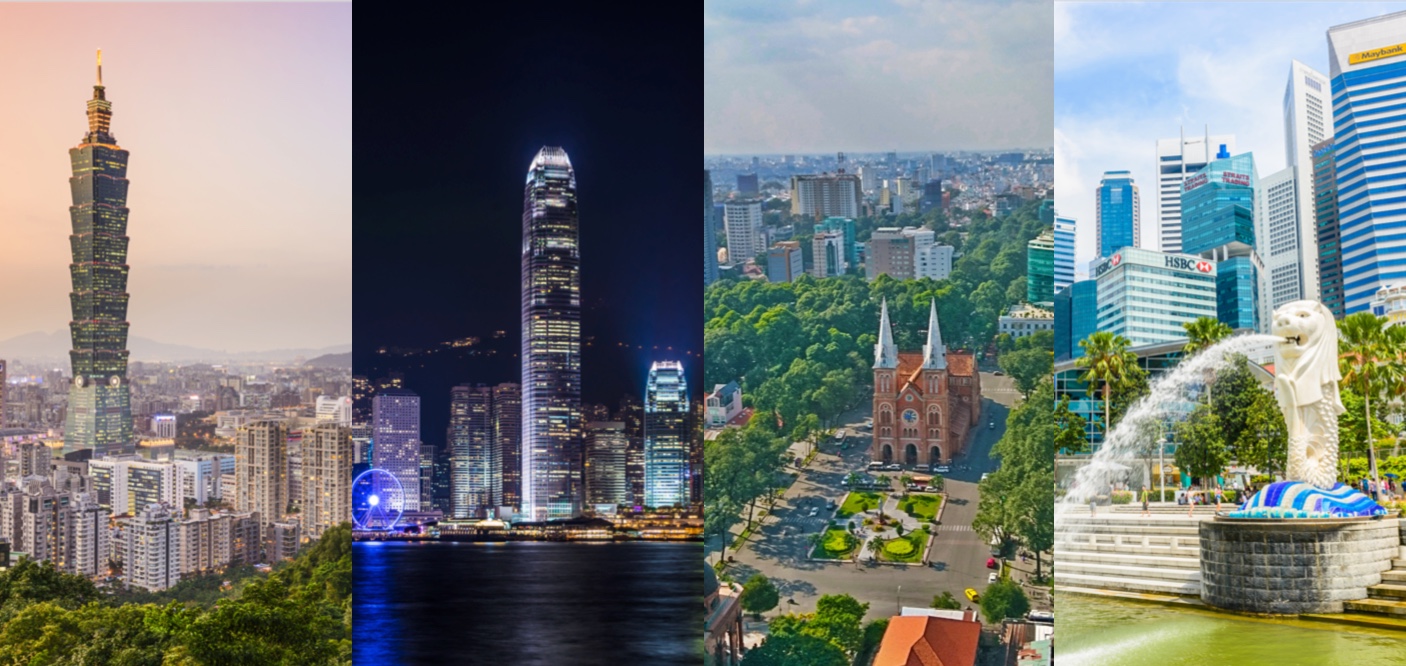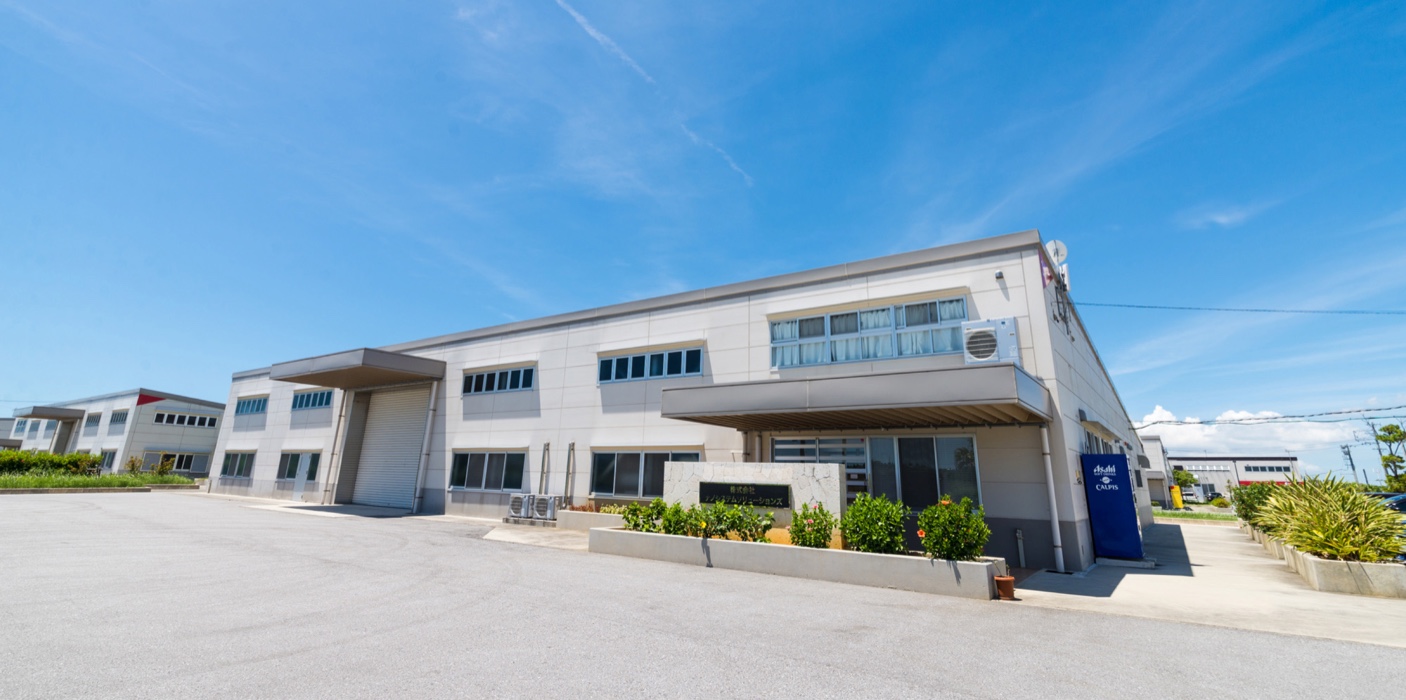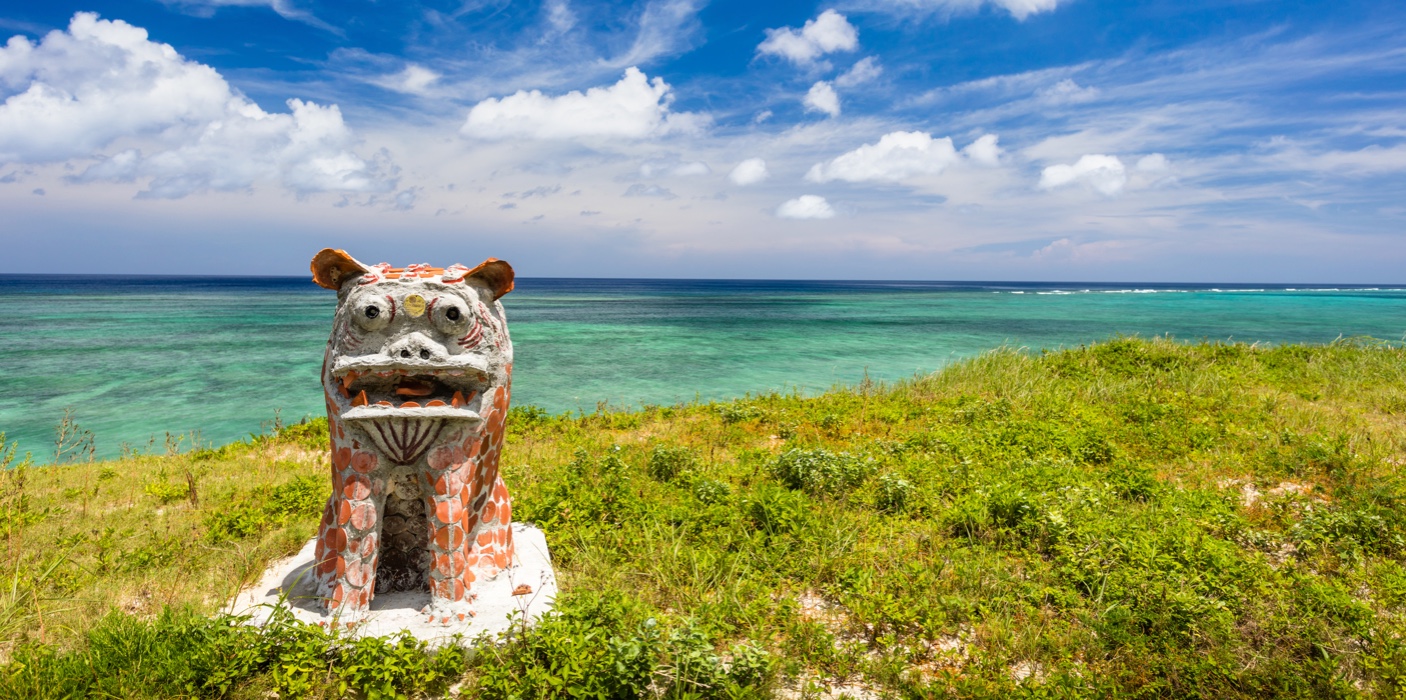Our Bountiful Location

While many companies put their headquarters in Tokyo, we have chosen to move our headquarters to Okinawa.
Now, we would like to tell you about the many advantages that we have enjoyed since making Okinawa our home.
Convenient Transportation

As a prefecture that emphasizes tourism, Okinawa offers very convenient transportation. In addition to major airlines such as JAL and ANA, when low-cost carriers are included, there are a large number of flights into and out of Okinawa every day. Even when we have meetings in Tokyo, our situation allows us to be there on the appointed day without having to travel a day in advance.
An Express Route to Every Country in Asia

Using the Okinawa International Aerial Logistics Hub, which allows nighttime customs clearance, enables us to provide rapid support. We can make arrangements for engineers and parts and respond within 24 hours to any issues that may arise involving equipment that we have supplied. The Hub operates 24 hours a day, and Okinawa is within around four hours of the major cities in Asia. This close physical proximity means that we are able to provide service within 24 hours.
Additionally, ANA Cargo, a brand that has earned trust from clients around the world as a technologically-advanced pioneer in the transportation of semiconductor equipment, operates out of the Okinawa International Aerial Logistics Hub. This, above all, allows us to operate with peace of mind.
Natural Disaster Risk Mitigation

Our factory is located in the Shinko District of Nakagusukuwanko, which is land that has been reclaimed thanks to an accumulation of coral reefs. The ground here is firm, creating the perfect environment for our operations, which require a stable clean room.
The Okinawan Climate, with an Average Temperature of 23°C

Semiconductor manufacturing requires an ambient temperature of 23°C. This is identical to the average temperature in Okinawa over the last 10 years. Furthermore, compared to Tokyo, the variation in temperature over the course of a day is remarkably small. This means that we are able to reduce the costs associated with maintaining a constant temperature with variations no greater than 0.1°C, as is needed in order to manufacture optical products.